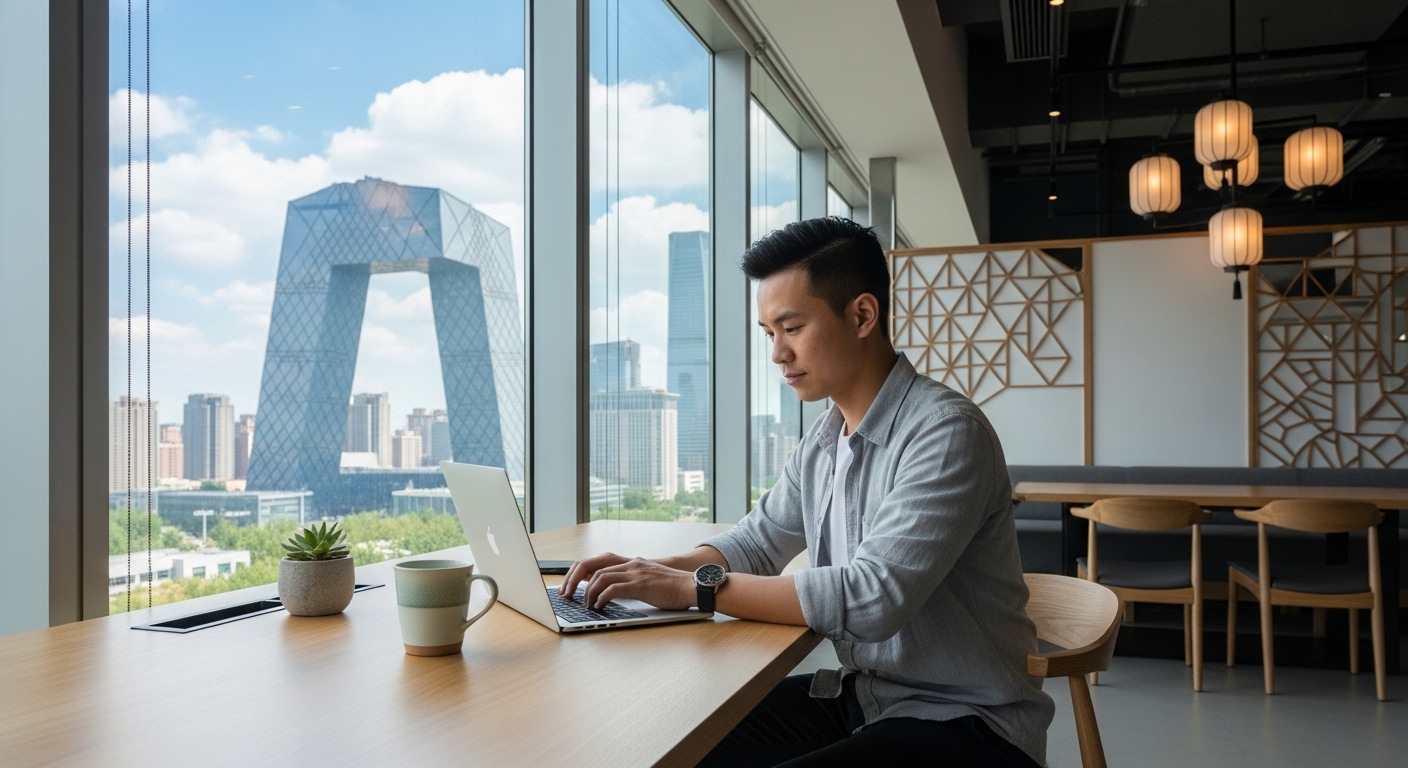The modern coworking space is a paradox. It offers a vibrant, caffeinated hum of creative energy and networking opportunities, yet that same buzz can become a primary source of distraction. For freelancers, remote workers, and entrepreneurs, mastering this environment is the key to unlocking its full potential. The challenge isn’t about finding a completely silent corner; it’s about developing a system to navigate the dynamic interplay between collaborative synergy and focused deep work. Recent trends show a massive return to shared workspaces, but professionals are now demanding more than just a desk—they need an environment where they can be truly productive. This guide introduces the Coworking Productivity Matrix, a practical framework designed to help you take control of your workday. We’ll explore four key quadrants—your mindset, your physical environment, your digital toolkit, and your social interactions—to help you build a robust system for achieving peak performance while still embracing the community benefits of a shared office.
Understanding the coworking paradox: energy vs. interruption
Coworking spaces are built on the promise of community and flexibility, a potent combination that has fueled their global expansion. They offer a powerful antidote to the isolation that many remote workers experience, providing a professional setting, networking opportunities, and a clear separation between home and work. This ambient energy can be incredibly motivating, creating a sense of shared purpose that pushes you to perform at your best. Seeing others around you focused and working can foster a positive peer pressure that discourages procrastination. However, this strength is also the source of its primary weakness. The very nature of a shared environment means you are exposed to a constant stream of potential interruptions. These can range from a loud phone call at the next desk to a friendly colleague stopping by for an unscheduled chat. The open-plan layouts common in many spaces can lead to sensory overload, as your brain tries to process conversations, movement, and background noise simultaneously. Research consistently shows that it can take over 20 minutes to regain deep focus after an interruption, meaning just a few minor distractions an hour can completely derail your productivity. The paradox, therefore, is that the environment designed to boost your professional life can also be the biggest impediment to getting meaningful work done. The key is not to view this as a flaw, but as a feature to be managed. Success in a coworking space requires a proactive, not reactive, approach to structuring your day and managing your attention.
The mindset quadrant: programming your brain for focus
Before you even step foot in the coworking space, the most critical work begins in your mind. Cultivating a productivity-focused mindset is the foundation of the matrix. Without intention, it’s easy to let the day’s ambient energy dictate your workflow. Start by defining your ‘must-win’ battles for the day. Before you commute, identify the one to three critical tasks that will define a successful day. This clarity prevents you from getting pulled into low-impact activities. Once you arrive, treat it like a traditional office. The act of commuting helps create a psychological separation between home and work, but you must reinforce it with rituals. Avoid easing into the day with social media or casual browsing. Instead, have a clear startup routine: put your things away, get your coffee, and immediately open the document for your first critical task. Employ proven time management techniques to structure your focus. Time-blocking is especially effective in a coworking environment; dedicate specific blocks of time (e.g., 90 minutes) to a single task with your notifications turned off. The Pomodoro Technique, with its 25-minute sprints followed by short breaks, is another excellent way to build focus endurance. These breaks are the perfect, pre-planned moments to engage socially, grab a coffee, or stretch, preventing burnout and random interruptions during your focus sprints. By programming your brain with clear goals and structured work periods, you transform from a passive occupant of the space into an active architect of your own productivity.
The environment quadrant: engineering your personal workspace
Your immediate physical environment has a profound impact on your ability to concentrate. While you can’t control the entire office, you can strategically engineer your personal bubble for peak performance. Your choice of desk is the first critical decision. If you require deep focus, aim for a spot in a designated quiet zone, a corner desk, or a seat facing a wall. This minimizes visual distractions from foot traffic and activity in your peripheral vision. Conversely, if your day involves more collaborative tasks, choosing a spot in a more active area can be beneficial, but this choice should be deliberate. The single most important piece of equipment in your coworking arsenal is a pair of high-quality, noise-canceling headphones. They are the universal symbol for ‘do not disturb’ and are incredibly effective at blocking out ambient chatter and noise, allowing you to create a private auditory environment with focus-enhancing music or pure silence. Beyond sound, consider your physical setup. Maintain a clutter-free desk to promote a clutter-free mind. Use a laptop stand and an external keyboard and mouse to ensure proper ergonomics, preventing physical discomfort from becoming a distraction. Small additions like a plant or a personal photo can make the space feel like your own, but avoid over-cluttering. By curating your micro-environment, you send a clear signal to your brain and to those around you that you are here to do focused, meaningful work.
The tools quadrant: leveraging technology for deep work
In the modern professional’s toolkit, technology can be both a primary source of distraction and a powerful ally for focus. The key is to leverage it with intention. Start by curating your digital workspace. Use focus-enhancing applications like Freedom or Cold Turkey to block distracting websites and apps during your pre-scheduled deep work blocks. Apps like Forest gamify the process, growing a virtual tree for every period you stay off your phone, which can be surprisingly motivating. Organize your digital files and use task management software like Asana, Todoist, or Trello to offload your to-do list from your brain onto a reliable system. This mental decluttering frees up cognitive resources for complex problem-solving. Beyond software, consider your hardware. A portable second monitor can dramatically increase your screen real estate, reducing the time spent switching between windows and improving workflow efficiency for many tasks. A reliable wireless mouse can be more precise and comfortable than a trackpad for long work sessions. Ensure your digital security is robust by using a VPN, especially when connected to the shared Wi-Fi network. By strategically deploying these tools, you build a digital fortress around your attention, ensuring that your technology serves your goals rather than derailing them. This proactive management of your digital environment is just as crucial as managing your physical one for sustained productivity.
The social quadrant: setting boundaries for uninterrupted flow
The community is a major draw of coworking, but managing social interactions is crucial for productivity. Setting clear, respectful boundaries is not antisocial; it’s a professional necessity for protecting your most valuable asset: your time and attention. The most powerful tool for this is non-verbal communication. As mentioned, wearing headphones is the universal signal for being in a state of focus. You can reinforce this with your body language—lean into your work and avoid making casual eye contact when you’re in a deep work session. If a colleague approaches you for a non-urgent chat, have a polite and practiced response ready. Something as simple as, “Hey, it’s great to see you! I’m just in the middle of something critical right now, but can I grab you for a coffee in about an hour?” works wonders. This acknowledges the person, validates their desire to connect, and respectfully postpones the interaction to a time of your choosing, such as a scheduled break. Be mindful of being a good neighbor yourself. Take all phone calls in designated phone booths or private areas. Keep conversations at a respectful volume. By modeling the behavior you wish to see, you contribute to a culture of mutual respect for focus. Remember, the goal isn’t to be isolated, but to control the timing of your interactions. By mastering the art of the polite boundary, you can enjoy the social benefits of coworking without sacrificing your workflow.
The collaboration quadrant: making intentional connections
The final piece of the matrix is about flipping the coin and actively leveraging the collaborative potential of your coworking space. Productivity isn’t just about solitary deep work; it’s also about smart collaboration and learning from the diverse network of professionals around you. Instead of letting chance encounters dictate your networking, be intentional. Schedule specific blocks of time for connection. This could be the 30 minutes after lunch or the last hour of your Friday. During these times, put your laptop away, grab a coffee from the common area, and be open to conversation. Participate in the community’s official events, whether it’s a weekly breakfast, a workshop, or a networking happy hour. These are structured opportunities to meet others without interrupting their workflow. Use the community’s digital platform, like a Slack channel or app, to ask for advice or offer your expertise. This is an efficient, asynchronous way to tap into the collective knowledge of the space. When you need feedback on an idea or are stuck on a problem, you are surrounded by a diverse pool of talent. By strategically seeking out these interactions, you gain fresh perspectives and build valuable professional relationships that can lead to new clients, partners, or job opportunities. Balancing the matrix means knowing when to put your head down and work, and when to lift it up and connect. This intentional approach ensures you get the best of both worlds: deep, focused productivity and the invaluable power of community.
Ultimately, thriving in a coworking space is an act of intentional design. It’s about moving beyond the default settings of a shared environment and architecting a workday that serves your unique goals. The Coworking Productivity Matrix provides a comprehensive framework for this process, reminding you to balance all four critical quadrants: a focused mindset, an engineered physical environment, a supportive digital toolkit, and well-managed social boundaries. By proactively addressing each of these areas, you can transform the potential for distraction into a structured, high-performance workday. You don’t have to sacrifice the vibrant energy and community benefits of a coworking space to achieve deep, meaningful work. Instead, you can learn to navigate the paradox, harnessing the collective buzz to fuel your motivation while protecting your focus with disciplined systems. Mastering this balance is not just a skill for coworking; it’s a crucial competency for the modern professional in any dynamic work environment.





